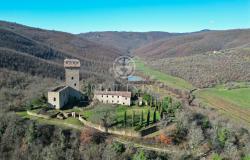Orvieto’s Pozzo di San Patrizio, the most famous attraction of the Umbrian town along with the stunning Duomo, has been added to UNESCO’s list of water museums.
The Pozzo di San Patrizio is a historic well, built by architect-engineer Antonio da Sangallo the Younger between 1527 and 1537, at the request of Pope Clement VII, who had escaped to Orvieto during the sack of Rome, when the city was attacked by the troops of Holy Roman Emperor Charles V in 1527. The well would serve to supply water to Orvieto in the event of a siege.
The Pozzo di San Patrizio is 53 meters deep and 13 meters large. It was created by digging into the tuff of the plateau on which Orvieto stands. It has two spiral ramps in a double helix, which allowed mules to carry empty and full water buckets in downward and upward directions without obstruction. Each ramp has 248 steps. The light is provided by 72 windows and dims as you get further down until it is quite dark at the bottom, where a small bridge connects the two staircases.
The pope named the well after Saint Patrick, inspired by medieval legends that St. Patrick's Purgatory, a pilgrimage site in Ireland where the saint used to retreat in prayer - a large, underground cavity that was said to give access to Purgatory, and came to indicate something very deep.
This engineering marvel, located in the center of Orvieto near gardens that include Etruscan remains, is now part of the Global Network of Water Museums (WAMU-Net), which includes more than 70 museums and institutions in 30 countries.
You can access the Pozzo di San Patrizio on your own (€5 fee) and descend the 50 meters into its mysterious depths.













